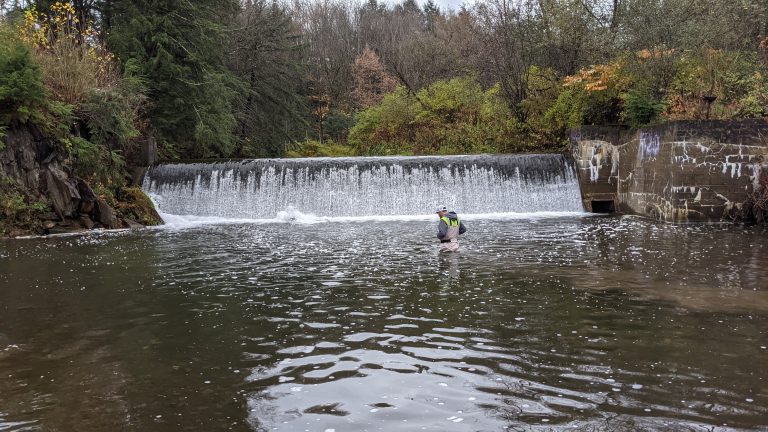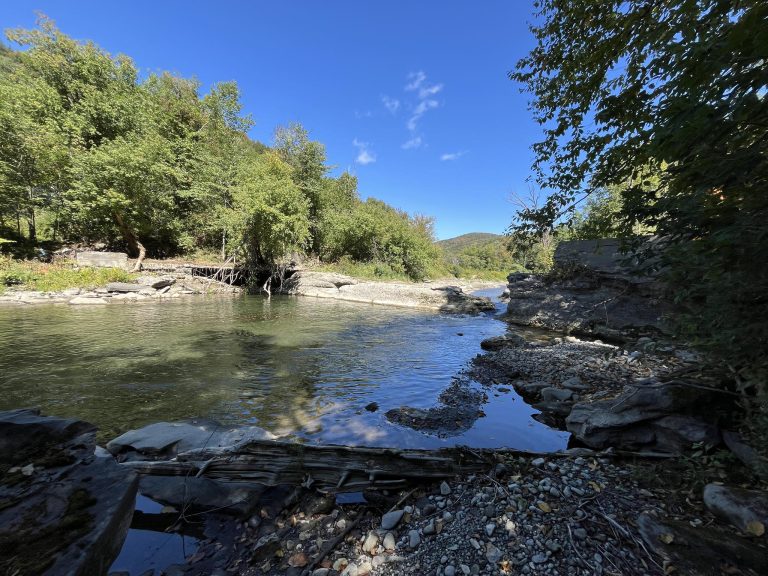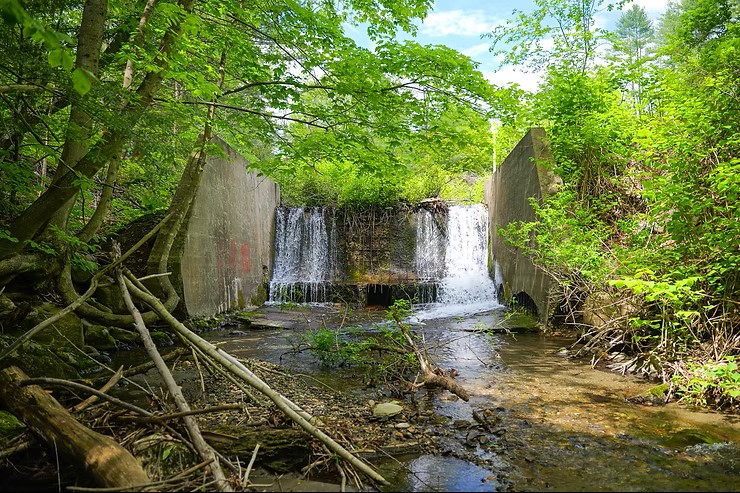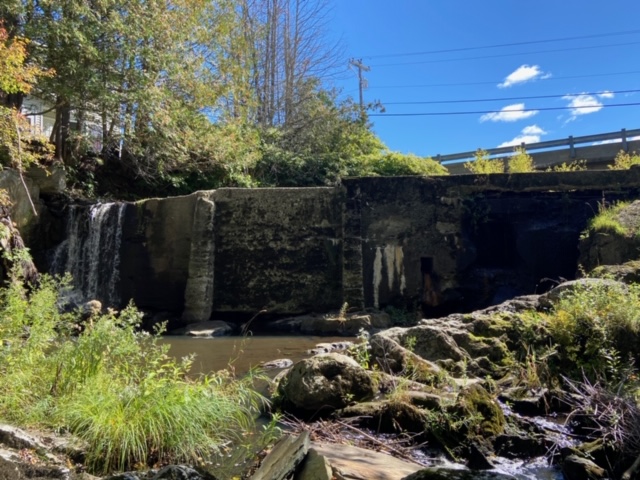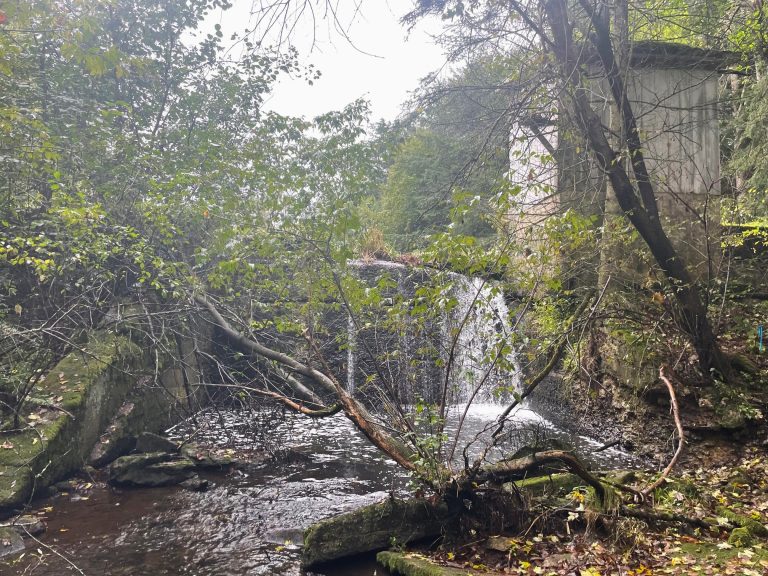Wainwright Dam, Salisbury (2024)
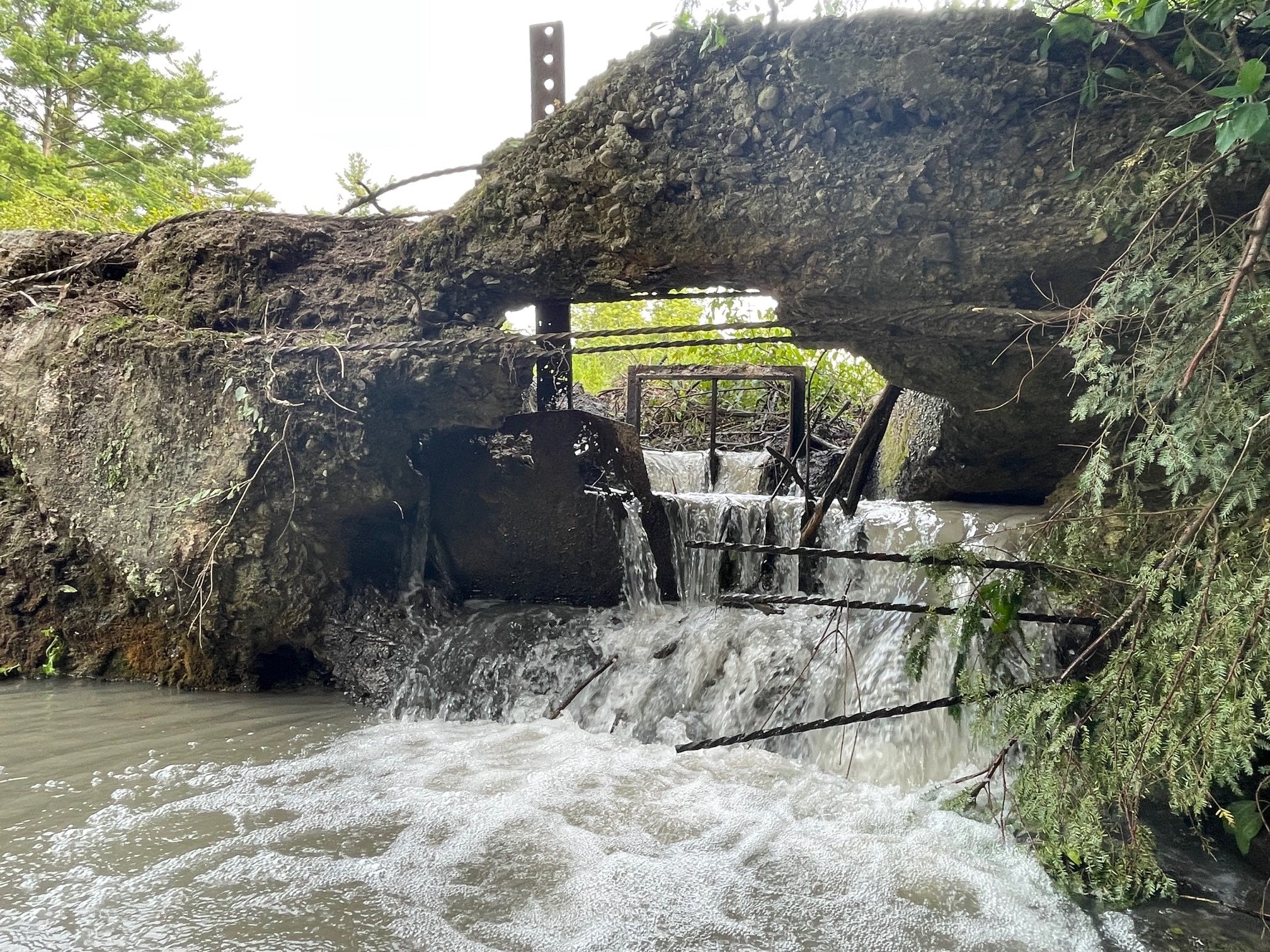
At VNRC, we oversee a dam removal program that aims to restore healthy rivers and aquatic habitats, protect public health and safety, and help reduce flood risk for the surrounding area.
This August, we began the removal of the Wainwright Dam. This derelict dam lies on Tributary 10 in Salisbury, Vermont just above the confluence with Halnon Brook and downstream from the Salisbury Fish Hatchery – and right off the busy thoroughfare of Route 7. Originally constructed as a sawmill in 1805 and later used as an ice pond, the dam has been responsible for the fragmentation of this river for 219 years.
This summer, after a series of hurdles, the VNRC team and our design partners (SLR Consulting, Markowski Excavating, and Trout Unlimited), made significant progress in recovering this river’s ecosystem.
The Wainwright Dam removal and river restoration project includes several phases. The initial phases entailed constructing site access and staging equipment, followed by implementing flow bypass and erosion control measures. Next, the project progressed to the removal of the concrete dam and a portion of the impounded sediment behind the dam (some sediment was allowed to remain in the river to restore downstream habitat). Then, the project proceeded to the restoration of the stream channel, reconnection of the floodplain upstream of the dam, and installation of eight habitat features (aka strategic wood additions) along the same channel reach. Following this restoration work, native trees and shrubs will be transplanted from the adjacent floodplain, and a local wetland seed mix will be spread. Trout Unlimited plans to host tree planting in 2025.
The ultimate goal of this project is to reconnect the headwaters of Tributary 10 with Otter Creek and ultimately Lake Champlain. These benefits include restoring aquatic organism passage at the dam location and through adjacent stream reaches for native brook trout and other cold-water stream species, restoring sediment transport for overall improved water quality, and reducing water surface elevations in the project vicinity during storm events by reconnecting the river to its floodplain and wetlands, allowing these areas to temporarily store water during flood events.
“Assisting in the recovery of a river system such as this is a great honor, and is most meaningful when we can restore natural stream processes so that the river can begin to heal itself,” said Karina Dailey, Restoration Ecologist and project manager with VNRC. “This tributary has failed water quality standards for many years, and the dam is contributing to this problem. We are very excited to reconnect this stream and restore its natural function.”
“We are proud to be part of this restoration project and look forward to the tributary naturalizing once the barrier and unnatural sediment deposits have been replaced with a free-flowing river, wood, and vegetation,” added Jessica Louisos, PE, Project Engineer with SLR Consulting.
Our dam removal program is busier than ever between directly managing 9 different projects and providing technical support for several others. At least three projects are fully designed and currently completing the permitting process, so 2025 could be a busy dam removal season. To learn more about our dam removal work head to FreeVermontRivers.org.
We’re grateful to our incredible funding partners: Vermont Emergency Management through the Flood Resilience Community Fund, NEIWPCC in partnership with the Lake Champlain Basin Program and US Fish and Wildlife Service.


